British Geological Survey
Type of resources
Available actions
Topics
Keywords
Contact for the resource
Provided by
Years
Formats
Representation types
Update frequencies
Service types
Scale
Resolution
-
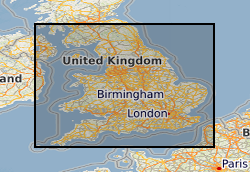
A card index storing supplementary information regarding name, operator, dates and commodity worked for each planning permission boundary recorded (drawn) on the Ministry of Housing and Local Government (MHLG) Mineral Planning Permissions Maps (see associated metadata). Information on the cards has been used to attribute the Ministry of Housing and Local Government (MHLG) Mineral Planning Permission Polygons (see associated metadata for MHLG Planning Permission Polygons).
-
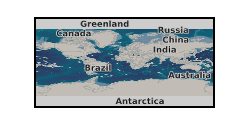
NIGL (NERC Isotope Geosciences Laboratories) is a comprehensive stable and radiogenic isotope laboratory facility that undertakes environmental, life, archaeological and earth science research, and educates and trains PhD students, in a collaborative research environment. This dataset contains a complete record of publications and scientific reports involving NIGL staff, dating from the formation of the group in 1987. The published research is not geographically restricted.
-
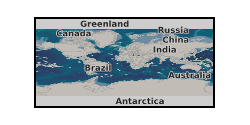
The data consists of a poster presented at 'The Geology of Geomechanics' conference, held at Burlington House, London by the Geological Society on 28-29 October, 2015. The poster describes an overview of work carried-out on behalf of the 'Fault seal controls on CO2 storage capacity in aquifers' project funded by the UKCCS Research Centre, grant number UKCCSRC-C1-14. The CO2-rich natural gas accumulations of the Fizzy and Oak fields are examined for their fault-seal potential, in particular accounting for the impact of IFT and contact angle on capillary threshold pressures. Results of an in situ stress study for the Inner Moray Firth is also presented, with results being applied to a geomechanical stability analysis of faults affecting the Captain Sandstone saline aquifer formation.
-

These files contain ground penetrating radar (GPR) data collected from the glacier margins and forelands of Falljökull and of Kvíárjökull, south-east Iceland, between 2012 and 2014. The data were collected using a Sensors and Software PulseEKKO Pro GPR system. For each glacier the data are stored in folders that indicate the month and year in which the surveys were conducted. Each GPR profile has a Sensors and Software GPR (.DT1) file, and associated header (.HD) and GPS (.GPS) files. The .HD files (which can be opened as text files) give the parameters and equipment used for each profile. GPS files are not available for some of the profiles collected on Falljökull in April 2013 (due to damage that occurred to the GPS linked with the PulseEKKO Pro system). For these profiles start, finish, and mid profile positions were recorded using differential GPS, and locations of these profiles are instead given by GIS shapefiles in the relevant folders. These datasets have been used in the publications listed below. Further information relating to the data collection methodology can be found therein. Phillips, Emrys; Everest, Jez; Evans, David J.A.; Finlayson, Andrew; Ewertowski, Marek; Guild, Ailsa; Jones, Lee. 2017 Concentrated, ‘pulsed’ axial glacier flow: structural glaciological evidence from Kvíárjökull in SE Iceland. Earth Surface Processes and Landforms, 42 (13). 1901-1922. https://doi.org/10.1002/esp.4145 Phillips, Emrys; Finlayson, Andrew; Bradwell, Tom; Everest, Jez; Jones, Lee. 2014 Structural evolution triggers a dynamic reduction in active glacier length during rapid retreat: evidence from Falljökull, SE Iceland. Journal of Geophysical Research: Earth Surface, 119 (10). 2194-2208. https://doi.org/10.1002/2014JF003165 Phillips, Emrys; Finlayson, Andrew; Jones, Lee. 2013 Fracturing, block-faulting and moulin development associated with progressive collapse and retreat of a polar maritime glacier: Virkisjokul-Falljokull, SE Iceland. Journal of Geophysical Research: Earth Surface, 118 (3). 1545-1561. https://doi.org/10.1002/jgrf.20116 Flett, Verity; Maurice, Louise; Finlayson, Andrew; Black, Andrew; MacDonald, Alan; Everest, Jez; Kirkbride, Martin. 2017. Meltwater flow through a rapidly deglaciating glacier and foreland catchment system: Virkisjökull, SE Iceland. Hydrology Research, 48 (6). 1666-1681. https://doi.org/10.2166/nh.2017.205
-
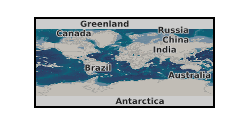
The IEA (International Energy Agency) Weyburn Carbon Dioxide (CO2) Monitoring and Storage Project has analysed the effects of a miscible CO2 flood into a carbonate reservoir rock at an onshore Canadian oilfield. Anthropogenic CO2 is being injected as part of an enhanced oil recovery operation. The European research was aimed at analysing longterm migration pathways of CO2 and the effects of CO2 on the hydrochemical and mineralogical properties of the reservoir rock.
-
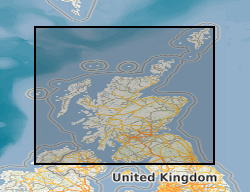
The Land Survey Plans collection of c.1,520 plans consists largely of mine plans acquired by the Survey, including 492 non-coal mine plans deposited by the National Coal Board 1984-87, and copies of mine plans derived from various sources including '6-inch reductions'. The collection also contains about 500 miscellaneous plans extracted from other Land Survey records in order to benefit from specialised systems of archival storage. The Survey's collection of Northern England mine plans are being added to the LSP collection. The collection supplements the Plans Of Abandoned Mines (Other than Coal & Oil Shale) in Scotland (NONCOALPLANSCO) providing an index to plans other than coal and oil shale for Scotland. Indexed on BGS Plans Database Index. Coal Authority hold some non-coal plans for Scotland. All non-confidential data held by NGRC(N) is available to users. Mainly coalfield areas of Central Scotland.
-
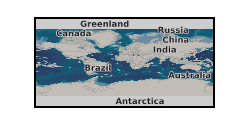
The data consists of a presentation presented at the UKCCSRC biannual meeting in Cranfield, April 20th 2015. The presentation describes an overview of work carried-out on behalf of the 'Fault seal controls on CO2 storage capacity in aquifers' project funded by the UKCCS Research Centre, grant number UKCCSRC-C1-14. Three main work strands are briefly described: 1) The Captain Sandstone aquifer is studied for the geomechanical integrity of faults, 2) Shallow gas accumulations in the Netherlands sector of the Southern North Sea provide an opportunity to study their coincidence with faulting while commonalities in the nature of the faults provide an indication of factors that might lead to fault leakage in CO2 storage sites. 3) The Fizzy gas field which is naturally rich in CO2 is studied for its fault seal potential as a natural analogue for fault-bounded storage sites.
-
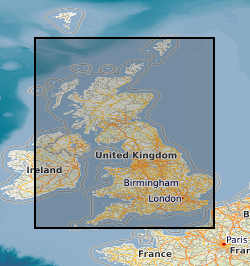
The map show the broad distribution of the industrial, including construction, mineral resources of Britain and the main sites where these are worked. Over extensive areas bedrock is covered by superficial deposits, including economically important sand and gravel resources. These superficial deposits are not shown on the map. Resources have been defined by dominant lithology (rock type). The map is a synthesis of the mineral resources and mineral working data held by the BGS in 1996. The published (paper) map has not been superseded however the digital mineral resources and mineral workings data has since been superseded. The map is logically consistent throughout.
-
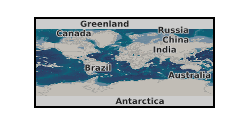
The UK is committed to meeting stringent carbon dioxide emission targets over the next 35 years. One potentially valuable technology in achieving this target is the development of Carbon Capture and Storage (CCS) technologies, where carbon dioxide is captured during power generation and, instead of being released into the atmosphere, is injected into porous rocks underground. Porous rocks, such as sandstone, can act as a 'reservoir' for CO2, which can potentially be stored at depth over long periods of time and kept isolated from the rocks above by a much less porous 'caprock'. The UK has a large 'porosity resource', currently estimated to be of sufficient capacity to store the necessary 2-5 billion tonnes of CO2 to meet 2050 CO2 emission targets. It has been estimated that up to 9 billion tonnes of UK storage capacity come from reservoirs that previously contained hydrocarbons, which have been extracted by the oil and gas industry. This form of CO2 storage has a number of benefits, as the rocks are generally well characterised and there may be pre-existing infrastructure (such as pipelines) suitable for adaption to CO2 injection. However, the process of hydrocarbon extraction, or 'depletion', can significantly impact both the reservoir involved and the surrounding rocks. These activities can potentially cause deformation, movement on faults and/or damage to infrastructure. However, the long term impacts of these activities, particularly when the reservoir is 're-inflated' during injection of CO2, are not well understood and there is limited physical data for specific rock types and scenarios. In order for depleted reservoirs to become a viable national resource, these uncertainties must be addressed. As such, this project is focussed on providing a better understanding of the impact of depletion and reinflation on reservoir and caprock material. It will involve a combined approach, using both laboratory experiments and computer simulation to improve our understanding of this aspect of storage site behaviour. The project seeks to address this key area with a focussed programme of work that will generate a much-needed and unique data-set, new modelling tools and a fuller understanding of the processes involved. The findings will inform regulators and aid operators in reducing the financial and environmental risks of CCS, for depleted storage sites, making the technology more likely to happen. In addition, work will be carried out to examine effective communication with the public, relating to this new technology. Social acceptability represents a major potential barrier to CCS developments, as indicated by protests and moratoria in several countries. It is therefore critical to understand public attitudes and the bases of concern about CCS, and work as effectively as possible to improve understanding and engagement. Work within this project will explore the factors that determine public and stakeholder understanding and acceptability of CCS storage proposals. The lessons and knowledge derived from this work will be summarised in an outreach and engagement toolkit, which will be disseminated to regulators, operators and communication specialists. Grant number: EP/K036025/1.
-
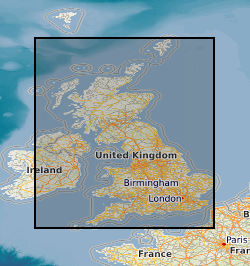
This national dataset brings together sixteen national datasets to create a GIS product that provides the information necessary to determine the extent to which the ground is suitable for infiltration sustainable drainage systems (SuDS). It includes derivations of the following datasets: soluble rocks, landslide hazards, groundwater flooding susceptibility, made ground, shallow mining hazards, geological indicators of flooding, depth to water table, superficial thickness, compressible ground, collapsible ground, swelling clays, running sands, predominant flow mechanism, permeability indices and the Environment Agencys source protection zone dataset. All datasets have been reclassified and reattributed (with text descriptions and a score field indicating the suitability of the ground for infiltration) and feature in the end product both as single entities, but also in derived 'screening' maps that combine numerous datasets.
 NERC Data Catalogue Service
NERC Data Catalogue Service